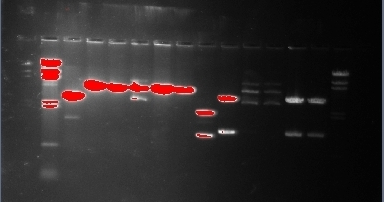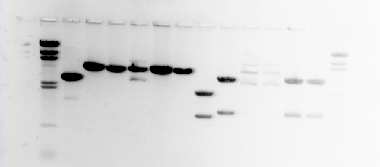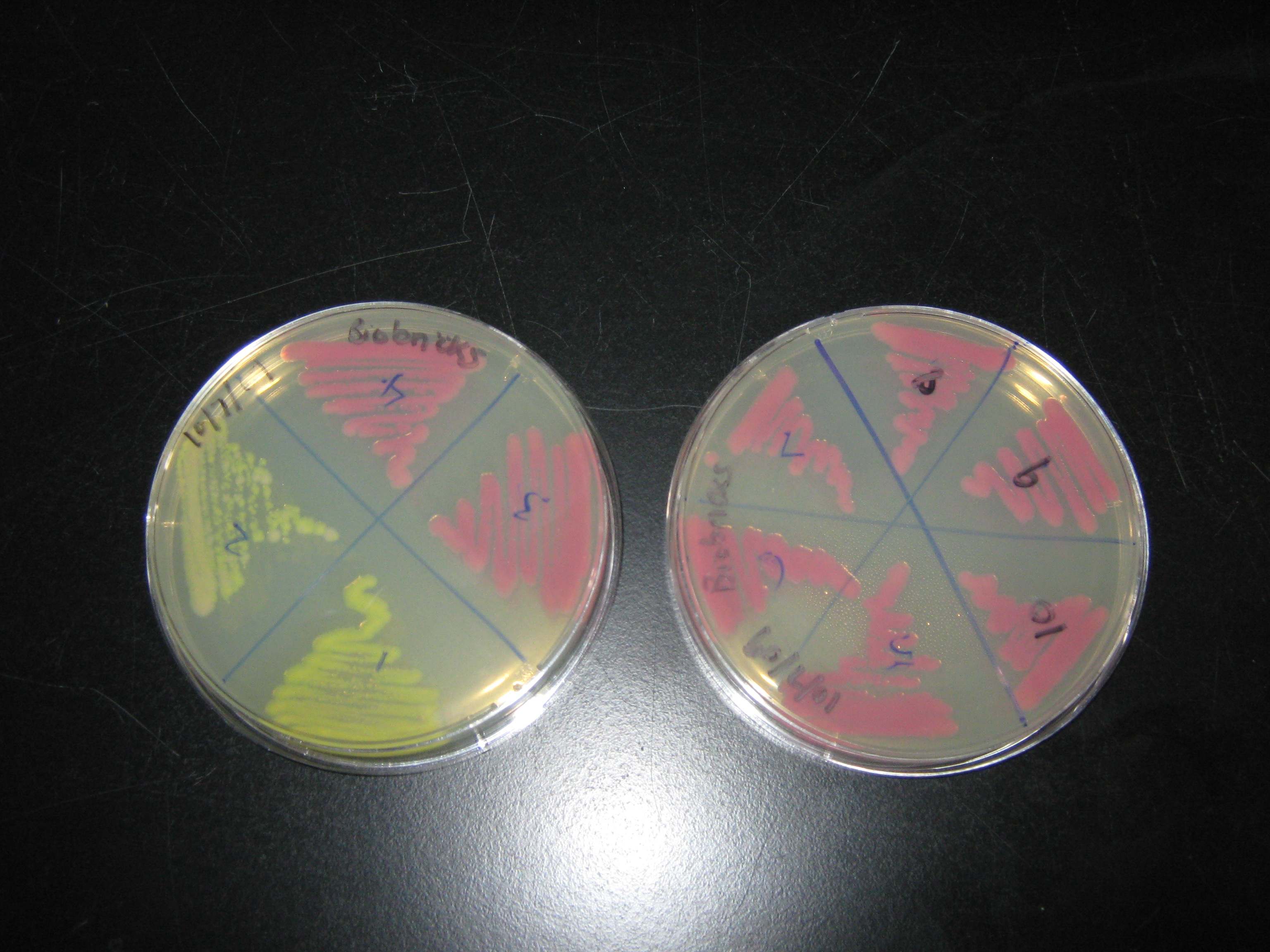Team:Newcastle/Project/Labwork/Week1/Week3
From 2009.igem.org
Contents |
Introductory Lab Sessions Week 3
(14th July - 17th July 2009)
The third week initial planning, 14th July - 16th July
- Tuesday
- DNA electrophoresis of restriction enzyme digested plasmids
- Innoculate LB with two selected cultures (decision based on DNA gel electrophoresis results)
- Wednesday
- Innoculate 2 flasks of LB with the two selected cultures in each one - leave overnight for 16 hours.
- Thurday
- Prepare large plasmid preps from both cultures
- Carry out DNA gel electrophoresis
Lab session: 14th July
Introduction
Today, we carried out DNA gel electrophoresis.
Procedure
- Prepare the agarose gel by melting it in the microwave
- Let the agarose cool down for a while
- While the agarose cools down, prepare the plate to run the gel
- Get the samples containing the DNA treated with restriction enzymes out of the fridge. The samples are as fellow:
First set - treated with EcoRI
Culture 2 (GFP(BBa_I13522)) - Lane 3
Culture 3 (RFP(BBa_J04450)) - Lane 4
Culture 4 (RFP(BBa_J04450)) - Lane 5
Culture 5 (RFP(BBa_J04450)) - Lane 6
Culture 6 (RFP(BBa_J04450)) - Lane 7
Culture 7 (RFP(BBa_J04450)) - Lane 8
Second set - treated with EcoRI and PstI
Culture 2 (GFP(BBa_I13522)) - Lane 9
Culture 3 (RFP(BBa_J04450)) - Lane 10
Culture 4 (RFP(BBa_J04450)) - Lane 11
Culture 5 (RFP(BBa_J04450)) - Lane 12
Culture 6 (RFP(BBa_J04450)) - Lane 13
Culture 7 (RFP(BBa_J04450)) - Lane 14
Plasmid with GFP(BBa_I13522) is resistant to AmpR and KanR and the other one with RFP (BBa_J04450) is resistant to AmpR and TetR. Both contain one restriction site for EcoRI and one for PstI. By just adding EcoRI we expected DNA to be linear whereas in tubes having both restriction enzymes we expected two pieces of DNA.
- Add 1ul of loading buffer to each DNA sample and centrifuge for one minute.
- We first loaded the standard DNA ladder. After the ladder, we loaded the other samples to the wells and run the electrophoresis. We set the voltage to 120 initially and then dropped to 90V afterwards. Because the DNA is negatively charged, this voltage moved the DNAs on the gel towards the positive side. We then looked at the DNAs on the gel by ultraviolet light.
Lab session: 15th July
Experiment Recap
In the previous experiment, we had carried out DNA gel electrophoresis on six plasmids from our transformed E.coli cells - the six plasmids were each divided into two sets with the first set of six being treated with EcoRI alone and the second set being treated with EcoRI and PstI:
First set - treated with EcoRI
- Culture 2 (GFP) - Lane 3
- Culture 3 (RFP) - Lane 4
- Culture 4 (RFP) - Lane 5
- Culture 5 (RFP) - Lane 6
- Culture 6 (RFP) - Lane 7
- Culture 7 (RFP) - Lane 8
Second set - treated with EcoRI and PstI
- Culture 2 (GFP) - Lane 9
- Culture 3 (RFP) - Lane 10
- Culture 4 (RFP) - Lane 11
- Culture 5 (RFP) - Lane 12
- Culture 6 (RFP) - Lane 13
- Culture 7 (RFP) - Lane 14
After analysis of the gel photographs and comparison with the expected band sizes for the plasmids, plasmid backbones and BioBricks, we decided that cultures 2(GFP) and 3(RFP) were to be used for a larger scale plasmid prep.
To 2 tubes of sterile LB nutrient broth, a sample of cultures 2 and 3 were introduced. They were then placed into the shaking incubator overnight.
Introduction
Today's procedure is straightforward. Using aseptic technique, we are to innoculate 2 flasks containing LB nutrient broth with the 2 cultures grown overnight. Once carried out, these flasks will be incubated overnight and used in tomorrow's larger scale plasmid prep.
Procedure
- Prepare 2 sterile flasks and to each of them, add 50ml of sterile LB.
Remember to use aseptic technique throughout, i.e. flame the lids of the flask and the LB bottle with a Bunsen burner before and after transferring liquids
- Label the flasks appropriately. To one flask, pipette 100 microlitres of the first culture and to the second flask, pipette 100 microlitres of the second culture. (In this case, they are cultures 2 and 3 - GFP and RFP transformed E.coli respectively)
- Place flasks in shaking incubator. To ensure that the right amount of cells grow in the media for the plasmid prep, the incubation period should be limited to 16 hours.
News
Events
- 20 – 21 June 2009 - Europe workshop (London)
- 23 – 24 June 2009 - UK iGEM meetup (Edinburgh)
- 23 October Practice Presentation (Newcastle)
- 23 October T-shirts are ready
- 27 October Practice Presentation (Sunderland)
- 27 October Poster is ready
- 30 October – 2 November 2009 - Jamboree (Boston)
Social Net
 "
"





